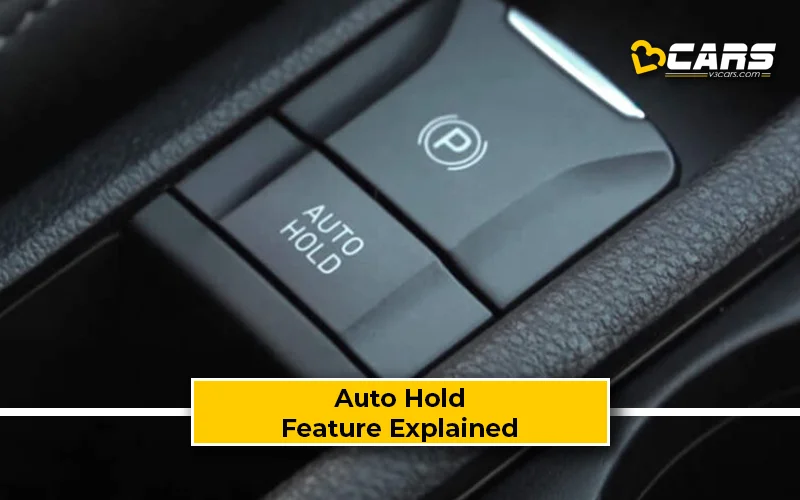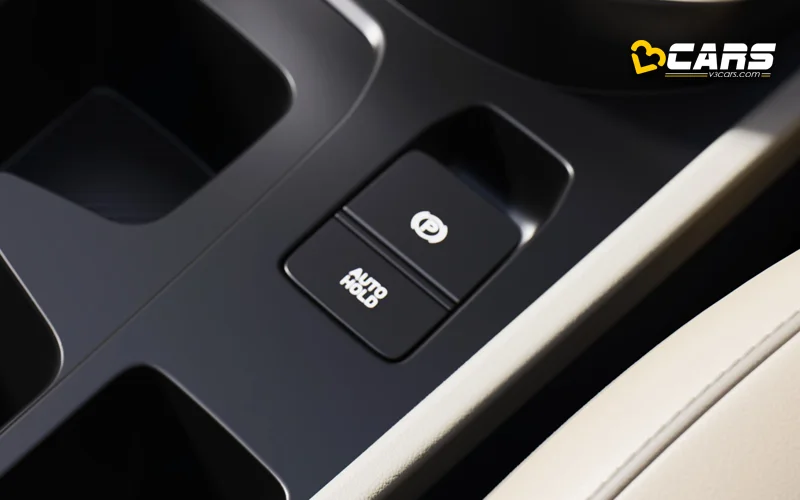Auto Hold – Feature Explained
The Auto Hold feature is a modern convenience that reduces driver fatigue, especially in stop-and-go traffic or when navigating inclines. It works in conjunction with the Electronic Parking Brake (EPB) to provide a seamless driving experience.

What Is The Auto Hold Feature?
The Auto Hold feature automatically holds the car or SUV stationary when it comes to a complete stop, even if the driver lifts their foot off the brake pedal. This function is active whether the car is on a flat surface, an incline, or a decline, preventing the vehicle from rolling backward or forward.
How Does The Auto Hold Feature Work?
Auto Hold relies on a sophisticated electronic system, typically integrated with the Electronic Parking Brake (EPB) and other vehicle sensors:
- Activation: The driver usually activates the Auto Hold function by pressing a dedicated button, often located near the EPB switch on the centre console. An indicator light on the dashboard confirms its activation.
- Vehicle Stop Detection: When the vehicle comes to a complete halt (at a traffic light or in a jam), the system detects zero wheel speed.
- Automatic Brake Application: The Auto Hold system then automatically applies the car’s brakes (using the hydraulic braking system, similar to how the EPB operates). The driver can remove their foot from the brake pedal, and the car will remain stationary.
- Automatic Brake Release: When the driver intends to move again, they simply press the accelerator pedal. The system detects this input, and the brakes are automatically and smoothly released, allowing the car to move forward without any rollback.
- Sensor Integration: The system uses various sensors, including wheel speed sensors, brake pedal pressure sensors, and sometimes an inclinometer (for detecting slopes), to precisely manage the brake application and release.
What Are The Pros And Cons Of the Auto Hold Feature?
Here are the pros, or advantages, of auto hold in cars:
- Reduced Driver Fatigue: Eliminates the need to constantly keep a foot on the brake pedal in traffic or at long stops, significantly reducing leg strain and fatigue.
- Enhanced Convenience: Provides a smoother and more relaxed driving experience, especially in urban environments with frequent stops.
- Prevents Rollback: Automatically holds the car on inclines and declines, preventing accidental rollback and making hill starts effortless.
- Improved Safety: Reduces the chance of the car creeping forward or backward unintentionally, enhancing safety in congested areas.
Here are the cons, or disadvantages, of auto hold in cars:
- Requires Electronic Parking Brake: Auto Hold functionality is almost always dependent on the presence of an Electronic Parking Brake system.
- Initial Adjustment: Some drivers might find the initial engagement or release of the Auto Hold feature slightly unnatural until they get accustomed to it.
- Not Ideal For All Situations: In very specific parking manoeuvres or situations requiring precise creeping, some drivers might prefer to temporarily deactivate the Auto Hold.
- Potential For Minor Delay: While generally smooth, there can be a very slight delay in brake release compared to manually lifting the foot off the pedal.
Can The Auto Hold Feature Be Installed From The aftermarket?
No, the Auto Hold feature cannot be installed from the aftermarket. It is an integral part of the car’s advanced braking and electronic control systems, working directly with the Electronic Parking Brake (EPB), wheel speed sensors, and the main ECU. Retrofitting such a complex, safety-critical system would require fundamental changes to the car’s architecture and is not practically or safely possible outside of factory installation.
Affordable Cars In India That Offer The Auto Hold Feature?
As Auto Hold is typically linked to the Electronic Parking Brake, its availability in affordable cars often mirrors that of EPB. It’s becoming increasingly common in higher variants of mid-range sedans and SUVs in India. Examples include:
- MG Hector: Top variants of this SUV offer the Auto Hold feature.
- Tata Harrier and Safari: Higher variants of these popular SUVs come equipped with Auto Hold.
- Hyundai Creta and Kia Seltos: The top-spec variants of these best-selling SUVs often include Auto Hold.
- Hyundai Verna: Select higher variants of the Verna sedan also provide this convenience.
The availability can vary based on the specific variant and model year, so it’s always recommended to verify the features with the manufacturer or dealership.
Also Read: Top EVs In India With Over 500km Range
Helpful Tools:
- Fuel Cost Calculator for Cars – Know your monthly fuel expense based on usage and mileage
- Car On-Road Price Calculator – Convert ex-showroom to on-road price for any city
Sell Used Car Online – Enter your car and contact details to get an instant price estimate and book a free inspection with our partner network



0 Comments